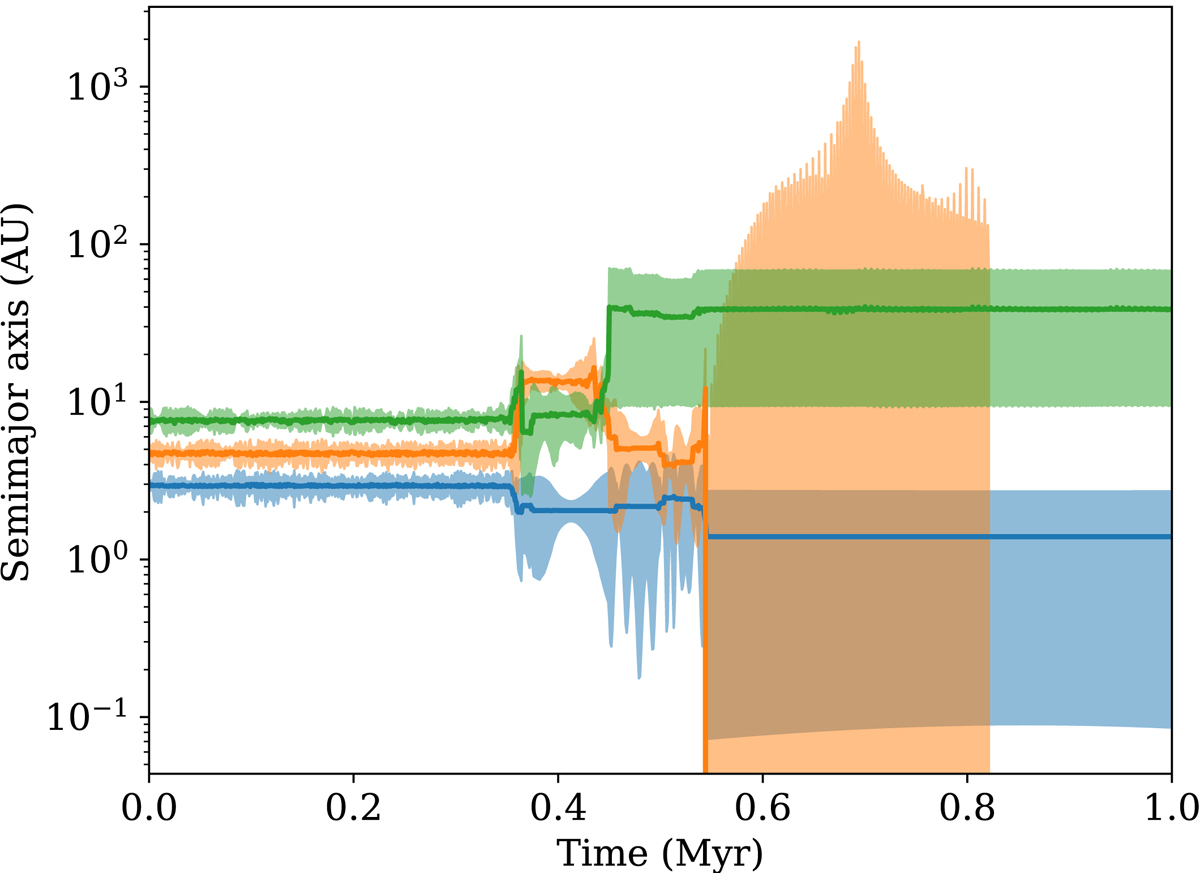Fig. 1.

Sample simulation. The solid lines mark the semimajor axis of each planet, and the shaded region goes from periastron to apastron. The three Jupiter-like planets start in near coplanar, near circular orbits. After a period of chaotic evolution but mostly stable orbits, there is a sudden instability. This leads to a period of orbit crossing and strong interactions that only ends when one of the planets is ejected from the system at t = 0.8 Myr. The remaining planets have final eccentricities of e = 0.754 (outer planet) and e = 0.938 (inner planet) at 10 Myr.
Current usage metrics show cumulative count of Article Views (full-text article views including HTML views, PDF and ePub downloads, according to the available data) and Abstracts Views on Vision4Press platform.
Data correspond to usage on the plateform after 2015. The current usage metrics is available 48-96 hours after online publication and is updated daily on week days.
Initial download of the metrics may take a while.


